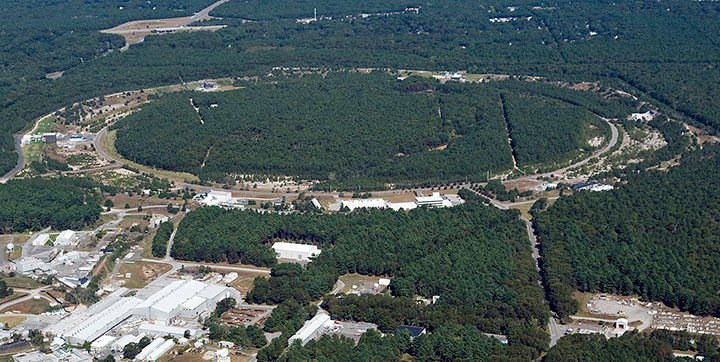The EIC Machine
The EIC will be the only electron-nucleus collider operating in the world
Collider Components
The Electron-Ion Collider will consist of two intersecting accelerators, one producing an intense beam of electrons, the other a high-energy beam of protons or heavier atomic nuclei, which are steered into head-on collisions. The collider will be made up of specialized high-tech hardware including:
Ion Source
One method of generating ions is to trap atoms or ions in an electrically charged chamber inside a cylindrical magnet. The voltage holds the charged ions in the chamber while an electron beam generated at one end passes through, systematically stripping electrons off the trapped atoms. When the desired number of electrons is removed, the voltage is turned off and the ion beam is released from the trap.
Electron Source
Methods for generating electrons take advantage of the photoelectric effect—the tendency of materials to emit electrons when struck by light of an appropriate wavelength. In an electron gun, there’s a cathode and anode. When a voltage is applied to one of them, it sets up an electric field between them. Part of the cathode is coated with a photo-emissive material, so that when a laser is shined on it, electrons are liberated via the photoelectric effect.
Superconducting Magnets
A superconducting accelerator magnet is a complex electromagnetic device in which a powerful magnetic field is generated by running electricity through coils of superconducting wire. These wires are made of a material that can carry electrical current with no energy loss, but to operate they must be chilled to 4 degrees Kelvin, or -452 degrees Fahrenheit—just about as cold as anything can get.
Pre-accelerator(s)
A pre-accelerator provides the initial energy to particles, by having them “surf ride” on the downhill slope of radio frequency electromagnetic waves. The particles are propelled forward at higher and higher speeds, getting closer and closer to the speed of light. The pre-accelerator then feeds the beam into the collider ring for final acceleration before collisions occur.
Building upon RHIC
The EIC design will make use of existing ion sources, a pre-accelerator chain, a superconducting magnet ion storage ring, and other infrastructure of the Relativistic Heavy Ion Collider (RHIC), below. A new electron source and electron accelerator and storage rings will be added inside the existing collider tunnel so that interactions (collisions) can take place at points where the stored ion and electron beams cross.
Cutting-edge Expertise
Building the EIC will require the same core expertise that led to the versatility of the polarized proton and heavy ion beams at the Relativistic Heavy Ion Collider at Brookhaven National Laboratory and many other world-leading research facilities across the DOE complex. Physicists, engineers, and technicians from Brookhaven and other research laboratories will design and build innovative accelerator and detector technologies to answer the questions of greatest interest to the community of EIC physicists.

Inside an EIC Collision
As electrons collide with ions at an EIC, they will scatter off the quarks within the proton or nucleus. Particles ejected from the collision by these scattering interactions strike various components of a detector. Scientists study the patterns and characteristics of the particles produced to tease out the internal structure of the protons and ions, including the distribution of the quarks and gluons.

Key EIC Characteristics
To meet the science goals established for the Electron-Ion Collider, the machine will feature:
Brookhaven National Lab's EIC Directorate coordinates with domestic and international partners to deliver the EIC construction project.
Brookhaven National Laboratory advances fundamental research in nuclear and particle physics to gain a deeper understanding of matter, energy, space, and time; applies photon sciences and nanomaterials research to energy challenges of critical importance to the nation; and performs cross-disciplinary research on climate change, sustainable energy, and Earth’s ecosystems.





